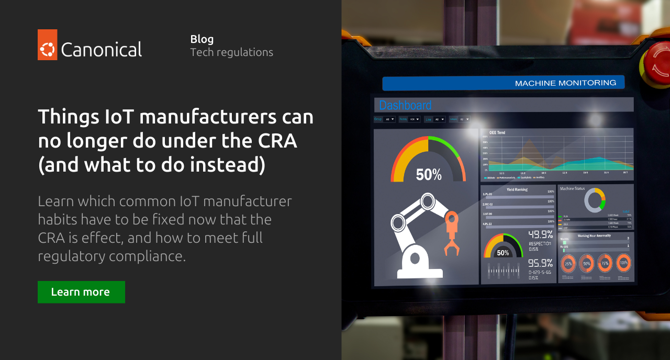Ubuntu
4w
254

Image Credit: Ubuntu
CRA compliance: Things IoT manufacturers can no longer do under the CRA (and what to do instead)
- The EU Cyber Resilience Act (CRA) introduces strict regulations for IoT and device manufacturers, impacting how they design and build Products with Digital Elements (PDEs).
- Manufacturers cannot pass security responsibility to users or upstream providers anymore; they must meet higher compliance standards themselves or find compliant suppliers.
- Documentation is no longer sufficient - manufacturers must proactively patch vulnerabilities, follow stricter documentation requirements, and produce machine-readable software bill of materials (SBOM).
- Intentional design flaws are no longer acceptable; steps must be taken to mitigate risks posed by device elements that could compromise security.
- Basic security practices like minimal attack surfaces, encryption, proactive patching, and access control are now mandatory to meet CRA compliance.
- Long-term patching and vulnerability management are required, with prompt public disclosure of fixed vulnerabilities and recalls for non-compliant products.
- Software supply chain transparency is crucial; manufacturers should consume trusted open source, ensure security updates, and choose compliant vendors.
- Market-first approaches are outdated; emphasis should be on security, long-term support, and minimizing attack surfaces to meet CRA requirements.
- Canonical offers solutions for CRA compliance, providing automated security patching, long-term maintenance, and support for meeting regulatory standards.
- To comply with the CRA, manufacturers must adopt best practices for PDE security, conduct compliance assessments, document processes, and choose responsible vendors.
Read Full Article
15 Likes
For uninterrupted reading, download the app